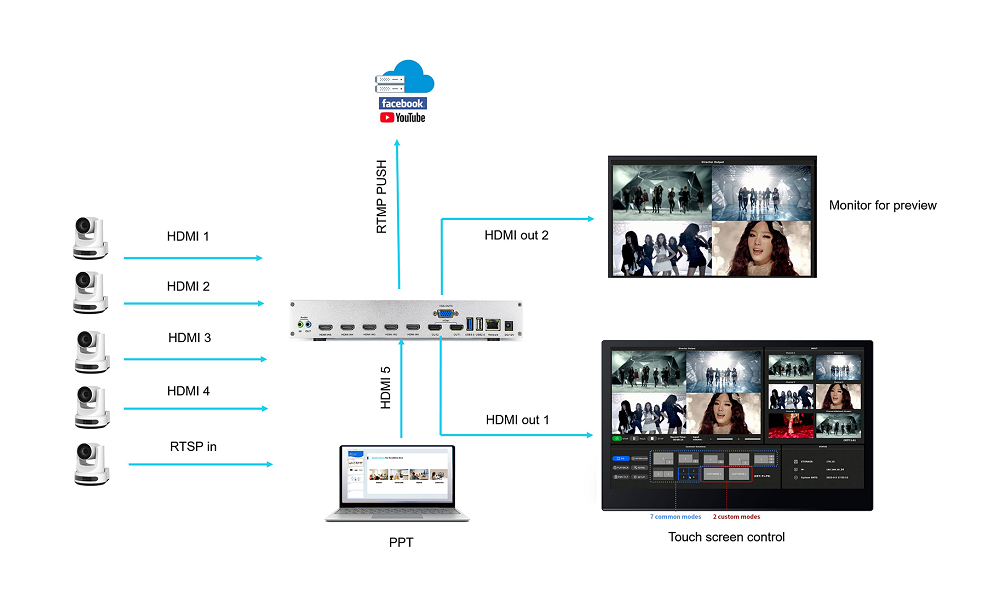Modern audiences demand dynamic, high-quality video experiences — multiple angles, real-time interaction, and instant access across platforms. From classrooms and operating rooms to studios and conference halls, multi-camera production has become essential for delivering engaging visual communication.
However, traditional multi-camera workflows often involve separate video switchers, encoders, recorders, and streaming servers — systems that are costly, complex to maintain, and require specialized operators.
The industry’s challenge is clear: how to create a simplified, integrated, and cost-effective approach without sacrificing professional quality.
A new generation of embedded systems offers a comprehensive solution by combining acquisition, mixing, recording, and distribution within a single architecture.
At the core of this approach is the concept of hardware-level integration, where all major functions of a production chain are unified:
Multi-source acquisition: Multiple HDMI, SDI, or IP inputs allow simultaneous capture from different camera angles or media sources.
Real-time mixing and switching: Built-in video processing enables seamless transitions between views, overlay of graphics, and picture-in-picture composition.
Parallel recording and streaming: Content can be encoded and stored locally while being streamed live to multiple destinations such as CDN, LAN, or social platforms.
Centralized control interface: A single touch panel or web interface simplifies operation, allowing one technician to manage an entire multi-cam workflow.
This convergence of functionality reduces the number of devices, simplifies cabling, and eliminates interoperability issues between components.
Operational Efficiency – One device replaces multiple hardware units, cutting setup time and operational complexity.
Consistent Quality – Hardware-level encoding and processing ensure stable performance even under continuous operation.
Scalability – Easily expand from single-room installations to multi-room or remote production setups.
Reduced Total Cost of Ownership – Lower equipment and manpower requirements make the system accessible for institutions and studios of all sizes.
Education: Multi-camera lecture capture, hybrid learning, and distance training.
Medical: Surgical video recording, live procedure broadcasting, and telemedicine training.
Corporate Communication: Town hall meetings, product launches, and online seminars.
Media Production: Studio interviews, live events, and field production requiring portability and flexibility.

Bridging Distances with Video Power